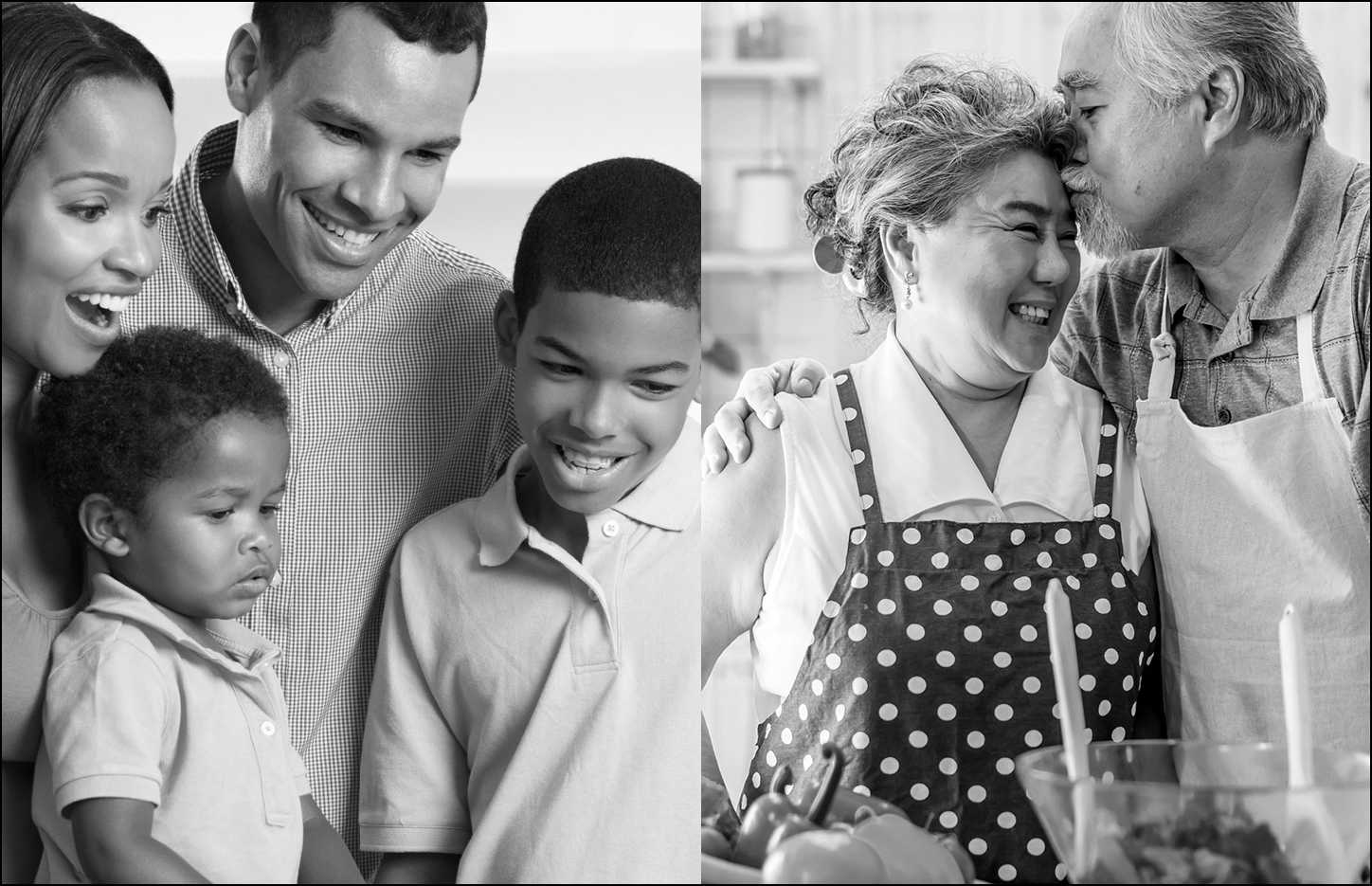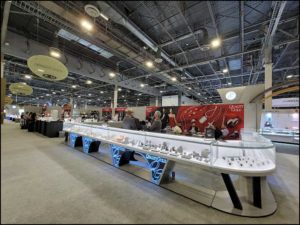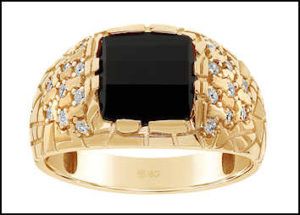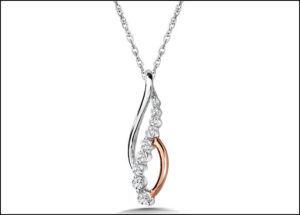DEI + Sustainability
= Good Business
Companies that embrace diversity, inclusivity and equity in their organizations actually outpace their competitors by respecting the unique needs, perspectives and potential of all their team members. The benefits are realized in higher revenue growth, greater readiness to innovate, increased ability to recruit diverse talent, and higher employee retention.
Signet Jewelers, largest retailer of diamond jewelry in North America has turned its business around, and during a pandemic, pursuing goals that foster diversity, inclusion, equity, and sustainable, ethical behavior for people and the plant. Signet had its best holiday in nine years with same-store sales up nearly 6% year-over-year in 2020, underscoring its ability to pivot in challenging conditions.
Last November, Signet received certification as a “Great Place to Work” company. Virginia Drosos, Chief Executive Officer of Signet, shared in a recorded keynote message aired during the JCK LAS Vegas Show that maintaining focus and articulating purpose has been critical to its success.
“For us, our purpose is to inspire love,” says Droso. “With diversity, equity and inclusion among our core values, we are committed to fostering a work environment where all employees feel respected and differences are celebrated.” She cited that 75% of Signet’s more than 20,000 team members rate the jeweler as a great place to work, as compared to the national average of 59%.
She also mentioned that for the third consecutive year Signet earned inclusion in the Bloomberg Gender-Equality Index (GEI), one of only 380 companies across 11 sectors, representing 44 countries and regions. Signet is the only specialty jewelry retailer to be recognized on this prestigious list.
Moreover, Signet is participating in the United Nations Global Compact, working to align its strategies and operations with universal principles related to human rights, labor, environment and anti-corruption, and take actions that advance societal and sustainable development goals by 2030. Signet also plans to be a certified member of the Responsible Jewelry Council (RJC) by 2025.
Younger Gens Amplify DEI
Diversity and inclusion have been amplified by the voices of the younger generations on social media. Millennials and Gen Zers form the most ethnically and racially diverse adult group in U.S. history, with Gen Z making up 27% of the American population, of which 47% is ethnically diverse.

Many consumers today, particularly the younger generations, are rewarding brands that capture diversity, share their inclusive values, and espouse causes that support social equity, finds eMarketer. The Plumb Club (TPC) Industry & Market Insights 2021 report, which included a survey of 1,000 U.S. jewelry consumers, advocates for brands to express diversity and inclusivity in their business strategy, from staffing and leadership to marketing and outreach.
Consumers want inclusivity, gender, and socio-cultural sensitivity from brands, giving them access to new opportunities. Embracing and reflecting real-world diversity not only boosts a company’s internal operations, it also helps marketers build greater brand affinity and deeper customer relationships.
As a founding and board member of RJC, Mark Hanna, CMO for the Richine Group, encourages all retailers and suppliers in the jewelry industry to become certified members of RJC. He reminds jewelers that younger consumers will find a product more enticing if it has documentation supporting that it has been sourced responsibility. He finds that social media has attracted more millennial and Gen Z consumers, who are more sensitive to sustainability issues.
Many studies have shown that consumers would pay more for products responsibly sourced and sustainable, and more employees want their companies to have responsible, ethical business practices that demonstrate corporate citizenship. In fact, TPC Insights finds 72% of jewelry consumers would pay more for a piece that was sustainably sourced, 26% of which would pay a lot more. “No business can escape these changing consumer expectations, nor should they want to,” Hanna says, “because responsible businesses perform better.”
Sustainability is about human dignity for all, and because the jewelry industry is one of beauty and emotions, it needs to work together to deliver positive impact on the ground, advocates Iris Van der Veken, executive director for RJC. “The time is now to accelerate action at all levels and every stage of the supply chain. This is the decade of trust and transparency, and we have a responsibility to contribute to the United Nations Sustainable Development Goals.”
TPC Insights find a heightened social and environmental consciousness, as we emerge from COVID. There has been a rise in “slow design” using natural materials in raw forms, reducing processed materials and carbon footprints along the way. The report identifies recycled gold, ethically mined-gems, responsibly cultured pearls, traceable conflict-free diamonds, and lab-grown diamonds as “new age” jewels.
Good design that does good for people and the planet reflect the changing times and momentum created by a new generation of activists speaking out against discrimination, violence and racism; and concerned about climate change, cites TPC Insights.
Consumers overwhelmingly feel sustainability in a jewelry purchase is important, according to the survey, with 20 percent rating it a 10, most important that their jewelry be responsibly sourced. The average was 6.5 on a scale of 1 to 10. Nearly three quarters (72%) would pay more for sustainably sourced jewelry.
More Inclusive Marketing
As more consumers seek diverse and inclusive representation in media, authentic marketing will undoubtedly resonate with conscious shoppers looking to buy from brands that align with their values, finds TPC Insights. The industry’s advertising methods, even the design of jewelry stores have sent a clear message that established jewelers focus on selling jewelry to traditional couples — typically cisgender, straight, and white.
The jewelry industry has long overlooked whole segments of customers, cites TPC Insights, largely ignoring LGBTQ+ customers and other segments like BIPOC and disabled in their marketing. It’s been six years, since the United States legalized same-sex marriage with the Supreme Court ruling in June 2015, and 17 years since the first states began legalizing same-sex marriage in 2004. The jewelry industry has not courted the LBGTQIA+ community.

Out front in retail has been Tiffany. The 184-year-old jeweler has been marketing to same-sex couples since 2015. Tiffany debuted this June its first men’s engagement ring ad, as it looks to tap into a new market for its high-end jewelry amid a rise in same-sex marriages globally and gender-fluid fashion trends. Its new men’s diamond solitaire rings feature round brilliant and emerald cut diamonds up to 5 carats. Tiffany said its aspiration for the line was to offer products in support of love and inclusivity, while “paving the way for new traditions to celebrate unique love stories.” It also debuted its new “Stand for Love” campaign spotlighting New Yorkers from the LBGTQ+ community in a short video sharing what they stand for and how it all comes down to love.
Jonathan Cohen, president of IB Goodman, Newport, Kentucky shared that men’s diamond rings were the stars of the JCK Las Vegas Show, and in larger (1.5-3 carat) total carat weights. In fact the manufacturer, known for its men’s collections, launched a new trade campaign touting men’s diamond solitaire engagement rings. He says that he sees lots of room for new traditions to be made in the commitment/engagement/wedding category.
With fashion embracing androgynous styles and “unisex” the buzzword for inclusion and diversity, there’s strong crossover in jewelry for men and women. Gender neutral is a big part of the creative rebellion against pigeonholing wearers into boxes, cites TPC Insights.
Harry Fiorentinos, director of sales and marketing for Novell Global, concurs. He says the brand’s 42-ring plain band display has been its most successful tool to help retailers and customers. “They can be wedding bands, but they can also be part of a cool stack mixed with sparkly diamond bands, or a thumb or index finger ring, or worn on a chain. The selection of widths, finishes, and textures in the ring 42-ring display offers infinite options.”
The Knot reports in its 2019 Jewelry & Engagement Study that while 96% of couples exchange rings at the start of their engagement, there are couples also proposing with non-ring items that are just as meaningful like watches. In fact, Refinery29 reports that engagement watches have been flying quietly under the radar and have been gaining traction. Non-traditional symbols of commitment have been popping up for several years, but really took root in 2020. After time to reflect, many traditions no longer held the same weight post-pandemic.
Courting Overlooked Segments
Matthew Perosi, a partner in Jeweler Websites, a jewelry e-commerce website company based in New York, says the general advertising approach used by retail jewelers to attract LGBTQ+ people still includes rainbows and rainbow jewelry. Perosi, and his business partner George Blair, who are known for providing staff training, market research, and understanding for the jewelry industry through their Jewelers Equality Alliance agency services (jealliance.com), say it shows a lack of understanding for target customers.
They also point out that the LGBTQ+ community being forced to search for phrases that jewelers are using instead of phrases they’d rather use. “We’d like to search for ‘same-sex jewelry’ or ‘same-sex engagement rings,’ but jewelers use marketing phrases like ‘gay or lesbian engagement rings,’ ‘gay or lesbian wedding rings.’” They say search results for LGBTQ jewelry or any phrase including the words gay, lesbian, or transgender and jewelry bring up an abundance of rainbow pride jewelry.
Perosi and Blair say that many jewelry stores are still afraid they will alienate existing customers by creating marketing campaigns that show same-sex and gender-neutral couples sharing tender or casual, everyday moments.
“It’s simple for every jeweler to re-imagine their ads with a couple of men, a couple of women, or a couple of people whose genders are not apparent. If the display of same-sex couples together is something a jeweler will not commit to, then the easiest way to portray inclusivity is to show a bride or groom by themselves rather than always showing heterosexual couples.”
Jewelers are still in a unique position to help the LGBTQ+ community establish new rules of engagement for wedding rings and jewelry, says Perosi, with honest displays of inclusiveness.
Representation of people of color, particularly interracial relationships and biracial children, is just starting to increase, over 50 years after the U.S. Supreme Court struck down laws banning interracial marriage
Parag Desai of SDC Designs underscores that diversity is central to the company’s business strategy, and is exactly what makes America special and beloved. Under the SDC umbrella, the Vera Wang LOVE Collection debuted in February its LOVE campaign featuring real couples, representing same-sex and interracial couples. An inclusive video hails Love a Symphony, a Rollercoaster, and a Journey. Love is Alive and Resilient.












